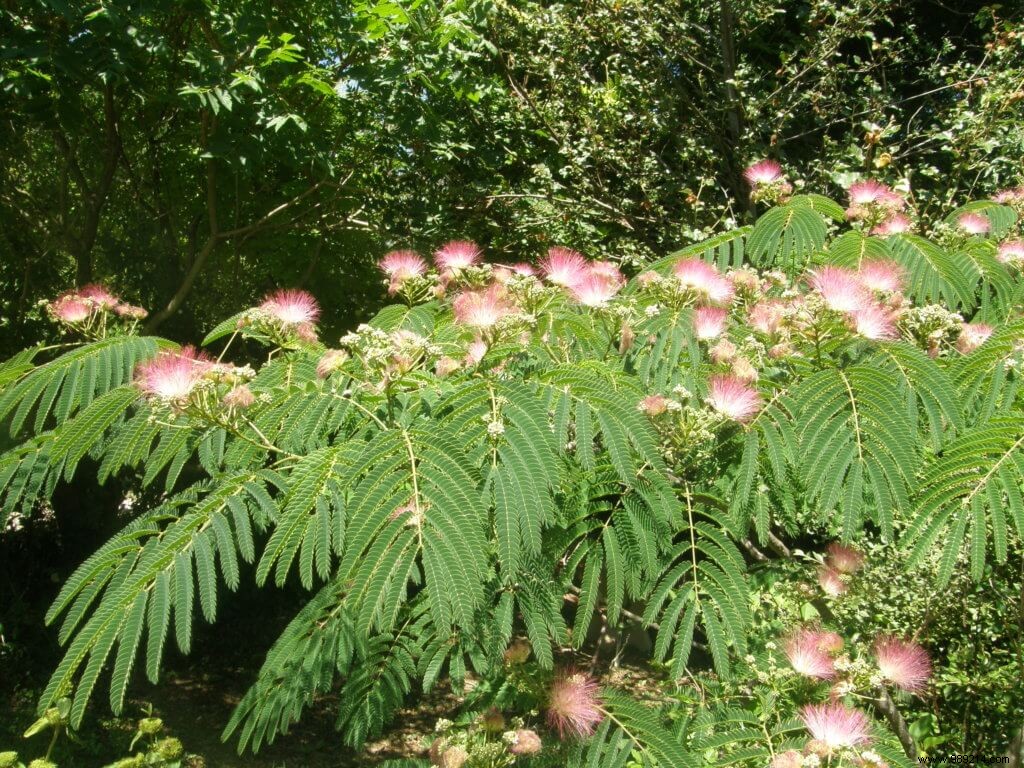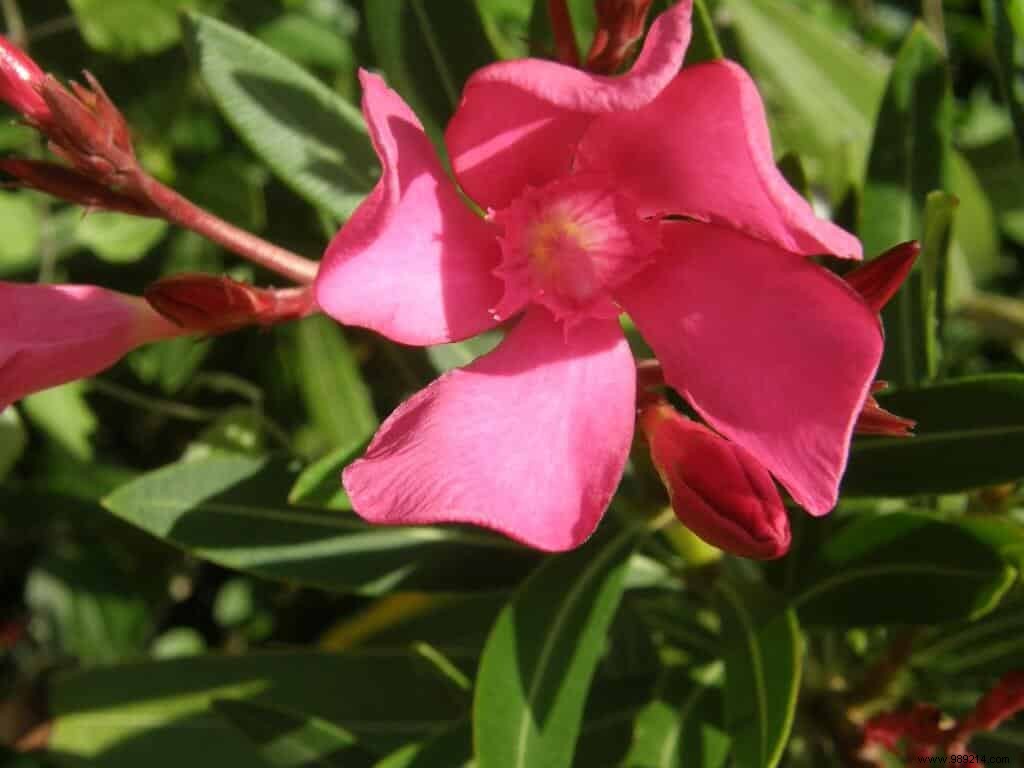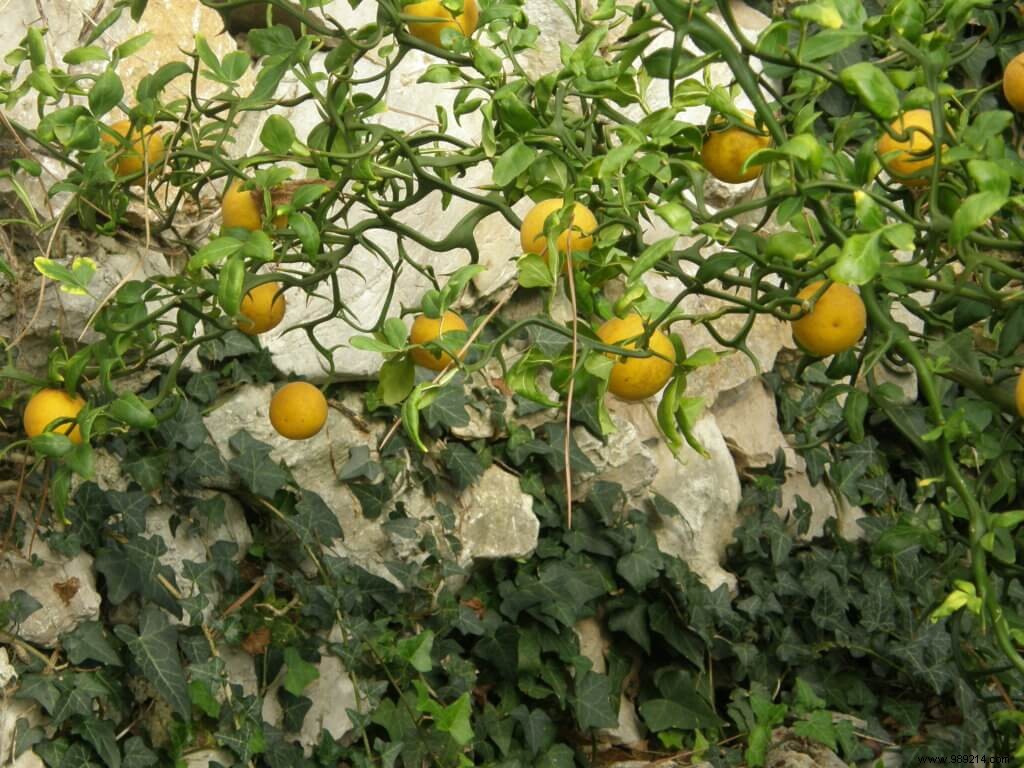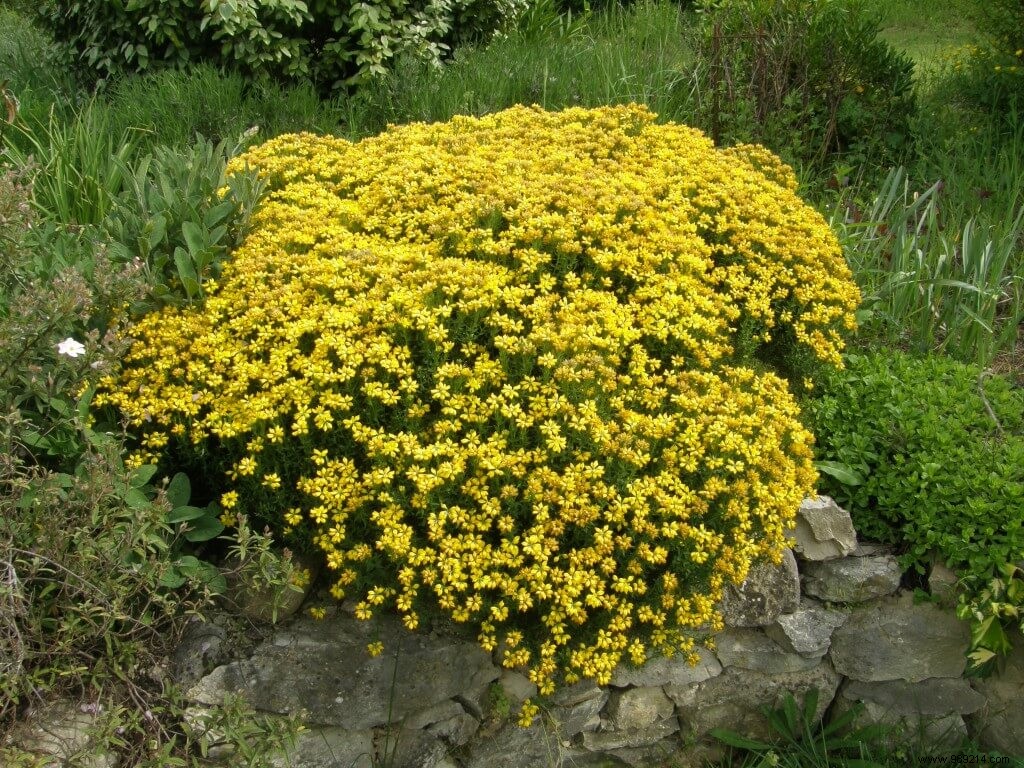Whether French, regional, local, vernacular names play tricks on us when it comes to plants. The French names of plants are traps! A denomination is made to identify a plant, and not another in principle. Nevertheless, the risks of error are numerous. The names of plants are a puzzle for learners of horticulture! So here is a non-exhaustive list, which will allow you to see more clearly about certain non-controlled French appellations.
Common French names
Botanical names (Latin)
Acacia (Robinia)Robinia pseudo-acacia Acacia of ConstantinopleAlbizzia MimosaAcacia SensitiveMimosa
We start very strong with this first table on the name of the plants. The tree commonly known as an Acacia , whose flowers smell like donuts, is actually a Robinia.
The Albizzia also has compound leaves but finer than the Robinia as well as a very different flowering.
The Mimosa which blooms at the end of winter in the south of France is it, a real Acacia . While the small sensitive sensitive that closes its leaves as soon as it is touched is a Mimosa .
You understand the possible confusion, especially when the same name determines two different plants depending on whether this name is French or Latin! Here are some other French names that are traps.
Common French names
Botanical names (Latin)
Holly Ilex False holly, small holly (Fragon) Ruscus aculeatusIlex and Ruscus make red balls in winter, hence the nominal approximation.
Another ambiguity is the Laurier appellation. Here are some sources of misunderstandings.
Common French names
Botanical names (Latin)
OleanderNerium Laurel tin (not Thyme!)Viburnum tinus Laurel sauce (or noble)Laurus nobilis Alexandrian LaurelDanae racemosa (or Ruscus aculeatus) Portuguese laurelPrunus lusitanica Cherry laurel (or almond or palm)Prunus laurocerasus California LaurelUmbellularia
Of all Viburnum , only one is called Laurier , the others are Viburnums . Two Laurels are Prunus, lusitanica , from Lusitania, ancient name of Portugal, and laurocerassus which gave laurel cherry because of its fruits, or almond because of the color of the foliage, or palm because of the shape of the leaves. Laurier noble is the translation of the Latin name, "sauce" coming from the use of the leaf in cooking.
Common French names
Botanical names (Latin)
Orange tree Citrus sinensis Trifoliate OrangePoncirus Osage Orange Maclura pommifera Mexican orange tree Choisya
The Poncirus serves as a citrus rootstock. The Osage orange tree bears fruits resembling oranges. As for the Mexican orange tree , it is the smell of its flowers that reminds us of orange blossom.
Common French names
Botanical names (Latin)
HornbeamCarpinus betulus Hornbeam OstryaLeaves and wood of Ostrya strongly reminiscent of Common Hornbeam. These are the fruits that gave the name of hops. But don't make beer with it!
Common French names
Botanical names (Latin)
Quince Cydonia Japanese Quince ChaenomelesFor quince jellies, it's Cydonia . The fruits of Chaenomeles are inedible.
Common French names
Botanical names (Latin)
Cypress green, blueCupressus False cypress (or dwarf cypress)Chamaecyparis Bald CypressTaxodium Leyland Cypress CupressocyparisThe Taxodium is a deciduous conifer, hence its qualifier bald
Common French names
Botanical names (Latin)
Hybrid broomCytisus LaburnumLaburnum Genêt Lydia Gesnista lydia Spanish broomGenista hispanica Spanish broomSpartium junceum
Cytisus translates into French as Hybrid genet . The Laburnum is a tree, scientifically named Laburnum . Watch out for Spanish Broom , two different botanical genera! (So two different plants) Genista hispanica bears thorns, and resembles a gorse. Let's continue with other French names that are traps.
If the Veronique is herbaceous, it is a Veronica . If it is shrubby, it is a Hebe !
Jasmin is a Jasminum , except Star Jasmine which is a Rhyncospermum !
The Lilac is a Syringa (be careful not to confuse it with the Seringat, French name for Phyladelphus ) . The Indian Lilac or Summer Lilac is a Lagerstroemia . A beautiful tree with blue flowers is also called Summer Lilac, the Melia .
Botanical names (Latin)
Norway MapleAcer Platanoides Sycamore MapleAcer pseudoplatanus Plane Platanus acerifolia Common BeechFagus Antarctic BeechNothofagus Common YewTaxus Plum YewCephalotaxus White MulberryMorus alba Paper mulberryBroussonetia Osage Mulberry (Osage Orange)Maclura Common (or German) MedlarMespilus germanica LoquatEriobotria japonica WalnutJuglans American WalnutCarya European OliveOlea europea Bohemian OliveElaeagnus angustifolia Elm Ulmus Siberian ElmUlmus pumila Siberian False ElmZelkova carpinifoliaYou have noticed that if we translate the botanical name of the Plane Tree, we find Plane Tree “with Maple leaf” and for the Sycamore Maple, we have Maple “false plane tree”. On the other hand, the plane maple is described as "resembling the plane tree".
And in the Bible, it is mentioned several times the Sycamore which is actually a fig tree , whose fruits are good…for pigs! To make the difference with the one called fig tree and whose fruits are exquisite.
In general Fir trees are Abies , and Picea gave in French Spruce . Generalities call for exceptions. The French names of the plants are traps with repetition.
Common French names
Botanical names (Latin)
Blue FirPicea pungens Douglas FirPseudotsuga Arizona FirPicea engelmanii Siberian FirPicea omorica Himalayan FirAbies spectabilis Himalayan pinePinus griffithii (or P. wallichiana) Umbrella pinePinus pinea Umbrella firSciadopytis verticilata Christmas treePicea excelsa Christmas tree (or S. de Nordmann)Abies nordmannianaNow, for the Christmas tree, we can choose the conifer that we like, as long as it is green and persistent to go with the song...
The French name Bruyère designates the Erica, Calluna, and Daboecia
The Rhododendrons , but also the Azaleas are all Rhododendron
The Daisy is sometimes a Leucanthemum , sometimes a Chrysanthemum .
The despair of the painter designates both, Saxifraga umbrosa, Saxifraga urbium but also Heuchera all species
At the level of the money baskets , it is also the doubt. Are we talking about Arabis alpina, Cerastium tomentosum or Iberis sempervirens ? The golden basket is either Alyssum saxatil or Sedum acre.
There are surely others. A ground cover plant with white flowers will be a basket of silver, or a basket of gold if the flowers are yellow.
Likewise, carnations are drowning in this Latin sea. The eyelet is a Dianthus , the flower of the gods, while the eye t of India becomes Tagetes , or Lychnis if it is a Carnation of Jupiter …and depending on the plant designated, you have the choice between Gypsophyllum, Armeria, Agrostemma, Aphyllanthes, and finally, Petrorhagia.
The names of plants in French are very often subject to interpretation. The burning bush may be a Pyracantha or a Japanese Quince . The list is long. When I started working in the nursery (I was 18), I was asked to prepare an order for 50 ATROs. I then put in a wheelbarrow 50 Thuya ATROvirens, it was necessary to understand 50 Berberis ATROpururea. If diminutives get involved, we're lost! Therefore, when talking about a plant, it is best to practice reformulation!
Fortunately, bees don't need nomenclature or taxonomy to forage on pretty flowers.
You can continue your French/Latin learning with this book